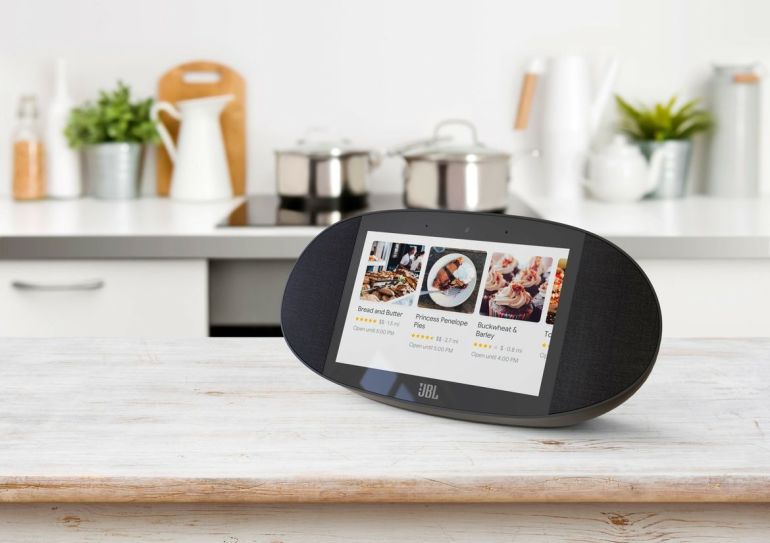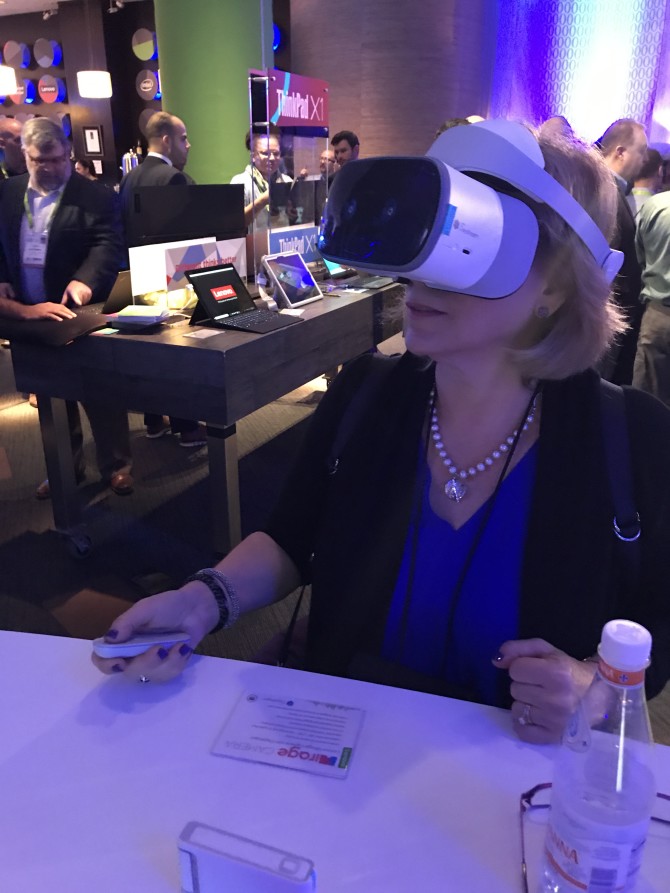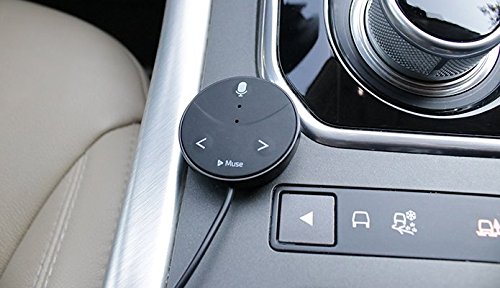With close to 4,000 exhibitors and a show floor spanning more than 2.75 million square feet of exhibit space, it’s impossible to see each and every booth and new innovation on display at CES, even with a flying jet pack.
Luckily, I had a few days to work my way through the huge halls, filled with the latest in Augmented and Virtual Reality, drones, 4K TV’s, and connected appliances. While many of these new innovations on display at the largest electronics show may never come to market, they represent the big tech trends we’ll be seeing in the coming year.
Smart Voice Assistants

Expect to say “Hey, Google” a whole lot this year. While last year’s show was all about Alexa integration into everything from your speakers to your washing machine, this year Google played catch-up and then some. Google Assistant is now in thousands of devices ranging from headphones to light switches to vacuums and even connected pet feeders. Two standouts from the show: the JBL Link View and the Lenovo Smart Display.
Both are voice activated video screens with Google Assistant built in, so you can stream audio and video, ask about your commute or your calendar events, or scroll through a recipe in the kitchen. Lenovo’s Smart Display is an attractive device that sits vertically or horizontally and comes in an 8-inch and 10-inch version while the Link View is powered by JBL’s incredible-sounding speakers. One advantage Google Assistant has over Amazon’s Alexa; you can watch YouTube videos.
4K TV

TV’s still take center stage at CES where companies like LG and Samsung built dazzling displays to show off their latest technologies. In addition to getting sharper and brighter, TV’s are getting smarter as they take on more functionality. The latest 4K TVs double as a smart home hub for all your connected devices, and have voice control for ease of use.
Samsung wins for innovation this year with “The Wall,” a 146-inch modular MicroLED TV that it calls the “screen of the future.” And if you don’t have a wall that big in your house to put a TV? No worries, it’s modular, so users can adjust the display size to conform to the environment.
LG added ThinQ AI to its already impressive Wallpaper displays. I got a close-up look at the LG OLED65W8 and was blown away by just how thin it is. It’s barely the thickness of a credit card and will come in a 65 and 77-inch model. These new TVs will have LG’s ThinQ artificial intelligence platform as well as Google Assistant so you can use voice commands to search for content, interact with compatible smart home devices and more. LG is also putting ThinQ AI into its smart home appliances so your LG washer and dryer will analyze your habits and start making smart suggestions for you.
Virtual Reality

VR is still a few years away from becoming mainstream but this year, Lenovo made VR a little less unwieldy and a lot more fun. The Lenovo Mirage Solo with Daydream is the first standalone Google Daydream VR headset, offering up an immersive experience without being tethered to wires or a device. It incorporates Google’s WorldSense technology that doesn’t require any external devices for positional tracking, so you can jump and duck and move around while playing games or viewing content.
For even more content, Lenovo introduced the Mirage Camera with Daydream, so you can capture your own VR images and videos. They get uploaded to your Google Photos or YouTube account to enjoy on the VR headset. The setup and experience are so simple, this will be appealing to those who have been too intimidated to try virtual reality.
Robots

Each year we see robots on display at CES as companies strive to create useful devices that can clean, perform tasks, or read to the kids. Sure, I love my Roomba robotic vacuum but Sony’s revamped Aibo stole everyone’s heart this year with its simple movements and emotive eyes. Designed to be a lovable companion, Aibo has sensors embedded in its body so it knows when you’re petting it. It has speakers and a microphone, so it can respond to touch and the sound of your voice. Cameras in its nose help it see who you are and find lost bones. Aibo can perform fun tricks like real dogs but unlike the real thing, it doesn’t need to be fed or taken out for a walk, making it the perfect companion for the elderly or those who are allergic to dogs. And oh, those puppy dog eyes!
Car Tech

With so many automakers at CES showing off their in-vehicle tech and concepts for the future, you would think it was the International Auto Show. Of course, everyone is working on an autonomous car; even ride-share service Lyft was there demonstrating its self-driving car, powered by Aptiv technology. Hyundai demo’d the use of artificial intelligence in its infotainment system while Nissan wants to measure brain wave activity to predict driver behavior and shorten reaction time.
These may all still be a few years away from landing in your driveway, but Muse from Speak Music can bring Alexa into your car right now. It’s a small device you plug into your car’s USB port or 12-volt socket and connect to your iOS or Android device via Bluetooth. Then, just ask Alexa to play music from Amazon, iHeartRadio, or other partners. It’s not just limited to car commands either, you can ask Alexa to play a game, read an audiobook or podcast, or turn on the smart lights in your house. Now you’re driving into the future with both hands on the wheel.

















